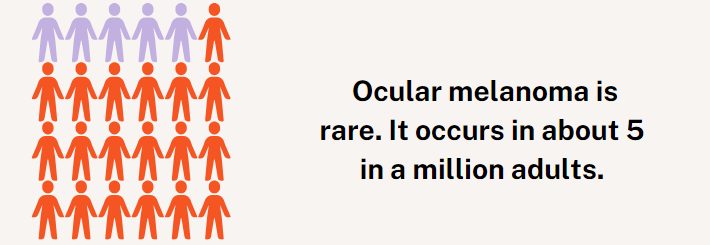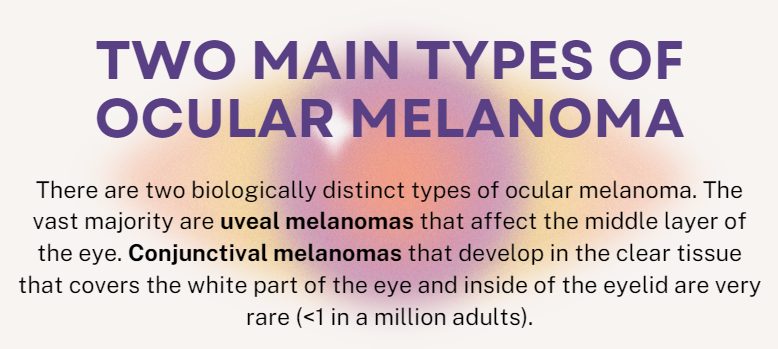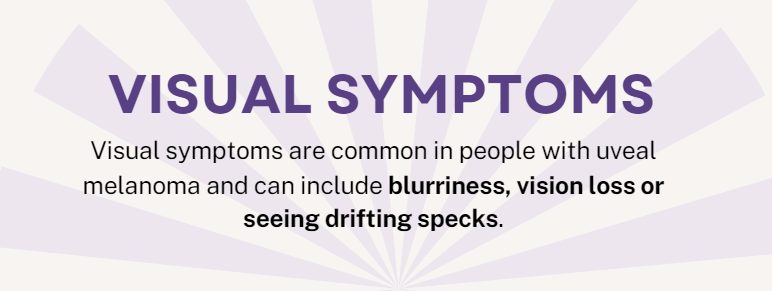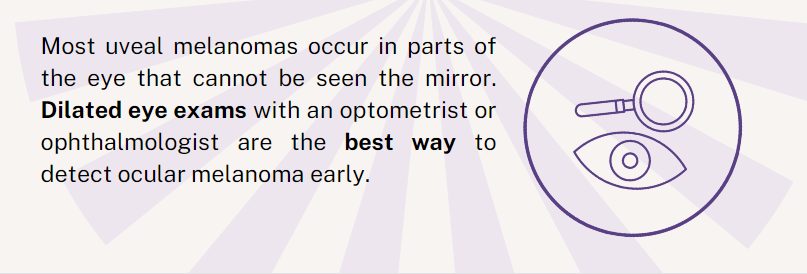Ocular Melanoma Prevention & Early Detection


How do I protect my eyes from developing ocular melanoma?
Unfortunately, because the causes of ocular melanoma are poorly understood, it is difficult to know how to prevent this type of cancer.
There is a strong link between sunlight and melanoma of the skin, but there is no proven link between the sun and eye melanoma. Some doctors, including the American Cancer Society, recommend wearing UV-protective sunglasses and applying sunscreen when exposed to strong sunlight in order to lessen the risk of cancer of the skin around the eyes as well as to protect the eyes.

What are the symptoms of eye melanoma?
Iris melanomas and conjunctival melanomas may be visible without needing to look inside of the eye, but these types of ocular melanoma are very rare. However, when visible changes do occur, one may notice changes to the pupil, or dark spots in the white of the eye or the eyelid. Some conjunctival melanomas may not be pigmented and instead appear pink or flesh-colored on the eye.
More commonly, uveal melanomas form in parts of the eye that cannot be seen in the mirror, so they can be difficult to detect outside of a dedicated dilated eye exam.
Many people with uveal melanoma will experience some sort of new visual symptoms.
When symptoms occur, they can include:
- Vision problems, including blurriness, sudden vision loss, or loss of peripheral vision
- Seeing drifting specks or squiggles, commonly called ‘floaters’, or flashes of light
- A growing dark spot on the iris (the colored part of the eye)
- Changes in the shape or size of the pupil (the dark circle at the center of the eye)
- Changes to the positioning or movement of the eyeball in the socket or bulging eyes
Less serious conditions, including normal aging, can also cause many of these symptoms. It is important to see a doctor as soon as possible to find out what is causing the symptom.
Of note, pain is not a common symptom of eye melanoma that has not already spread extensively outside of the eye.
Some patients have a freckle or nevus in the eye that may change over time. People with an eye nevus should have it monitored regularly by an eye doctor who specializes in eye disease, called an ophthalmologist. It is common for people to have choroidal nevi, but their transition into a melanoma is rare. A dark spot on the iris, or colored part of the eye, should also be checked by an ophthalmologist especially if it is growing.

Can an eye doctor see ocular melanoma? Can an ophthalmologist detect eye cancer?
Many cases of ocular melanoma can be detected by an optometrist or ophthalmologist during a dilated eye exam. A diagnosis should be confirmed by a specialist in the diagnosis and treatment of eye cancer, called an ocular oncologist.
Treatment often works best when cancer is caught early. Having regular annual eye exams with an ophthalmologist (including dilation) is the best way to detect eye cancer early.

What is the average age for ocular melanoma?
Ocular melanoma is most common in older adults, with a peak in cases around age 70. While ocular melanoma can also occur in children, this is rare. For example, only about one in 100 uveal melanomas occur in children.


